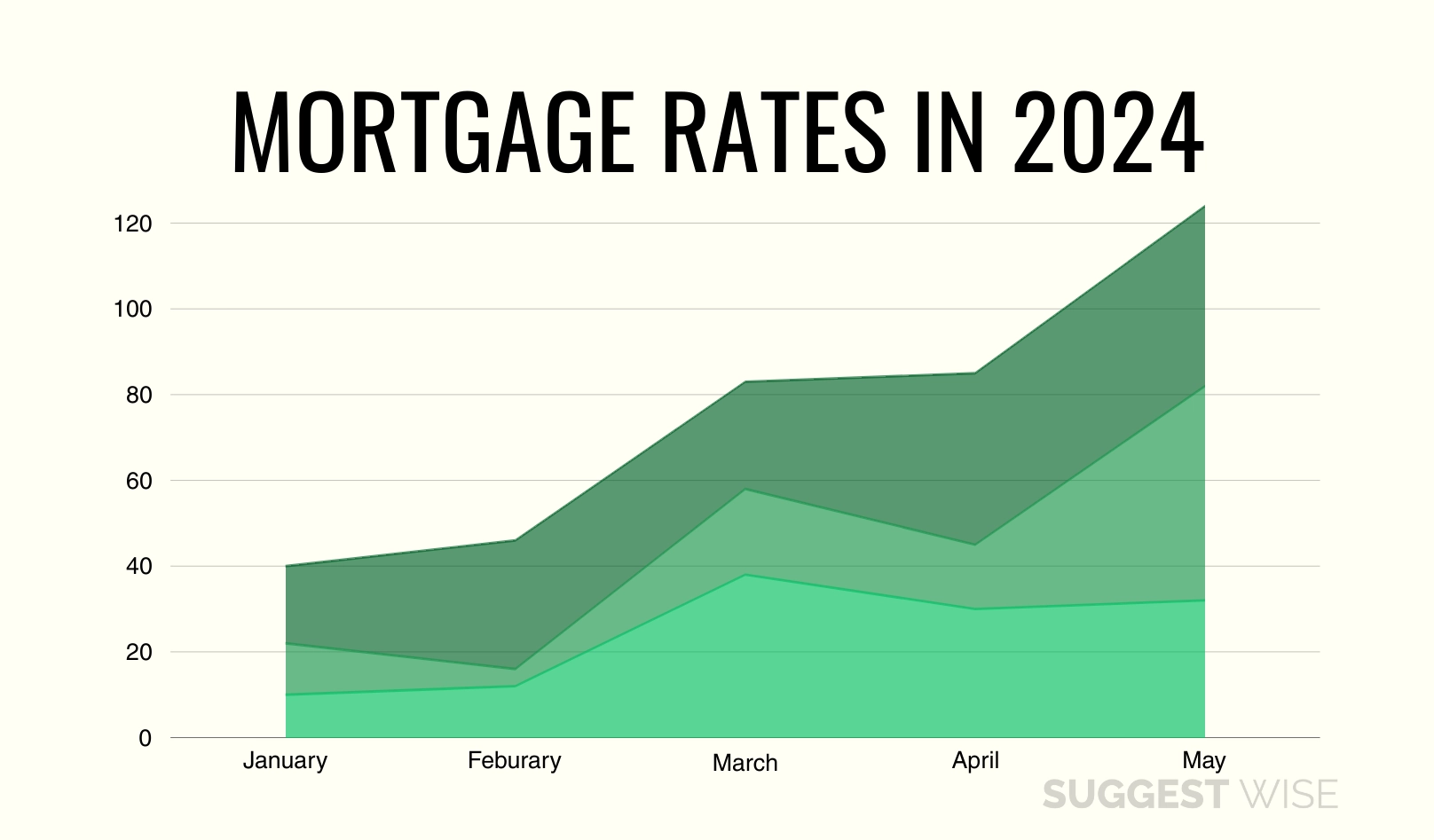
Mortgage Rates in January 2024
Mortgage rates in January 2024 remain elevated compared to historic norms but have edged down from the highs seen in late 2022. With inflation showing signs of cooling and the Federal Reserve pausing its aggressive rate hike campaign, expectations are for mortgage rates to continue moderating through 2024. However, volatility remains in the near-term forecast.
Current Mortgage Rates

In the first week of January 2024, average 30-year fixed mortgage rates hover around 7% for new home purchases and 7.5% for refinances, according to data from Freddie Mac and Bankrate. Compare that to January 2022 when rates averaged under 3.5%.
Rates on 15-year fixed mortgages currently average approximately 6.5%, while adjustable rate mortgages (ARMs) with shorter 5/1 and 7/1 terms are averaging between 7% and 8%.
These rates reflect averages for borrowers with strong credit profiles. Your specific rate will depend on your credit score, down payment, debt-to-income ratio and other qualifications. Always shop around with multiple lenders to find the best rate for your situation.
Factors Impacting 2024 Mortgage Rates
Mortgage rates closely track the yields on 10-year Treasury bonds. When Treasuries rise, rates typically follow. One key factor pushing Treasury yields higher in 2022 was the Federal Reserve rapidly raising its benchmark interest rate to squash stubbornly high inflation.
But with consumer prices growing at a slower pace, the Fed has paused rate hikes since November 2022. Most Fed policymakers are now projecting rate cuts could begin in 2024 if inflation keeps trending down toward the 2% target.
This shifting stance on rates is contributing to expert predictions that mortgage rates will drift lower through 2024. However, ongoing economic uncertainty means rates will remain volatile in the near term.
Will Mortgage Rates Go Down in 2024?
Most experts believe mortgage rates will moderate over the course of 2024 but differ on the extent and timing of declines.
Projections include:
- National Association of Realtors: Expects 30-year fixed rates to reach 6% this spring and end 2024 around 6.3%.
- Mortgage Bankers Association: Forecasts 30-year fixed rates dropping to 6.1% by end of 2024.
- Bank of America: Predicts cuts by the Fed in 2024 “could breathe new life into the housing market” and gradually lower rates, perhaps in the second half of 2024.
- Fannie Mae: Estimates 30-year fixed rates averaging 6.5% in Q4 2024.
The consensus is rates will remain volatile early in 2024 before drifting lower in the back half of the year, assuming inflation continues improving. But there is uncertainty around whether mortgage spreads will tighten back to pre-pandemic levels.
How to Get the Best Mortgage Rate
While economic forces are out of your control, you can take steps to get the lowest rate possible for your situation:
- Improve your credit – The higher your score, the lower your rate. Review your credit report and address any errors.
- Lower your debt – Total monthly debt payments vs. income (DTI) below 43% is ideal. Pay down debts.
- Increase down payment – At least 20% down avoids private mortgage insurance and earns better rates.
- Shorten loan term – You’ll pay less interest with a 15-year or 20-year mortgage.
- Compare loan types – ARM rates are lower now but carry future rate risk.
- Shop with multiple lenders – Compare rates and fees to find the best deal.
When Does Refinancing Make Sense?
With rates soaring over the past year, refinance volume dried up as most borrowers already had sub-3% rates. But if rates decrease meaningfully in 2024, more homeowners could benefit from refinancing.
Generally, you may want to refinance if you can get a rate at least 0.5 to 1% lower than your current mortgage rate and recoup closing costs within a few years. Work with a lender to crunch the numbers and see if refinancing aligns with your break-even timeline and savings goals.
Monitor average rates so you can act if they drop below your existing rate. Having your credit and financial documentation ready will make the process smoother when the time comes.
The Bottom Line
Mortgage rates are forecasted to moderate but remain elevated compared to pre-2022 levels. Locking in even a slightly lower rate in 2024 can mean big savings. Boost your credit, save for a down payment and get ready to act when the time is right for you.
FAQs
What are average mortgage rates in January 2024?
For borrowers with good credit, average 30-year fixed mortgage rates are around 7% for new purchases and 7.5% for refinances in early January 2024.
Will mortgage rates go up or down in 2024?
Most forecasts predict rates will remain bumpy in early 2024 but moderate over the course of the year, ending somewhere between 6% and 6.5% on average.
How low could rates go in 2024?
Some optimistic forecasts peg 30-year fixed rates returning to the 5% range by the end of 2024 if inflation falls sharply. But ongoing volatility means rates may not reach those levels.
When is the best time to get a mortgage in 2024?
It’s impossible to time mortgage rates perfectly. Focus on getting your finances in order so you can act when rates start trending lower, potentially in the second half of 2024. Monitor rates daily.
How do I get the best mortgage rate?
Improve your credit, lower your debt, make a sizable down payment and compare quotes from multiple lenders to get the lowest rate for your financial situation.
Should I refinance my mortgage in 2024?
If you can get at least 0.5% below your current rate and recoup closing costs in a reasonable timeframe, refinancing may make sense as rates decrease in 2024.
